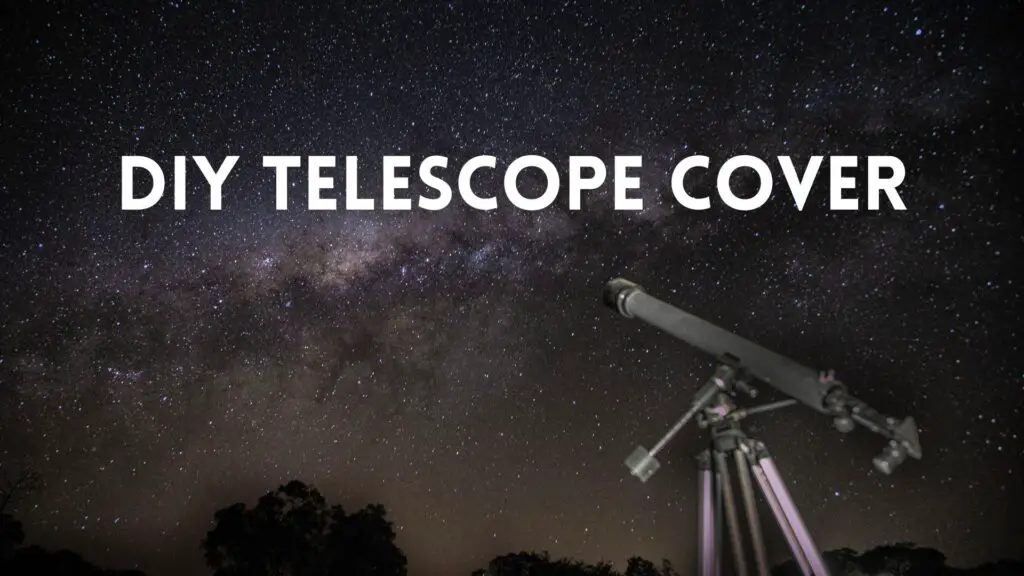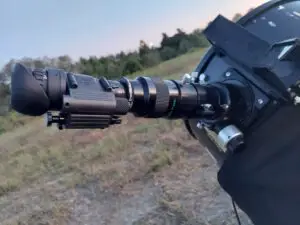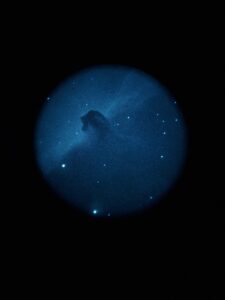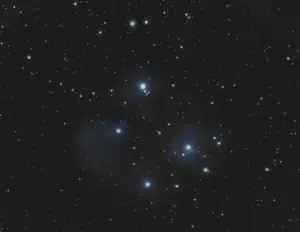If you have a permanent place to mount your telescope, perhaps an installed pier or a covered porch or gazebo you may be able to leave your scope assembled with a good cover.
I often travel to observe and I can use my cover to protect the scope when I am done observing for the night, but don’t want to pack up the scope in the dark.
They are often seen at star parties when people are away from their scopes.
A DIY cover will help protect your scope and mount from bugs,dust,and may be cheaper than buying one.
If you live in a very humid environment,consider that having your scope covered could actually do it harm.
Always let your scope dry before covering,and don’t cover it when wet.
Also consider the heat,that if you use something like a plastic bag,it would just disintegrate under hot temps,and worse, some of that plastic could melt on your optics,ruining them.
What Can I Use To Cover My Telescope?
Commercially available telescope covers are made of a reflective material that helps to reflect heat from the sun.
DIY telescope covers can be made from:
- Reusable Survival Blanket
- Grill Cover
- Motorcycle Cover
- Raincoat
- Windshield Sun Shade
- Heavy Tarp
- Garbage Bag
- Canvas
These materials are all designed to reflect heat and are hearty enough to be folded up and reused time and time again.
There are areas where the reflective covering is not necessary, but remember that if you are storing your scope in an area where there may be direct sunlight it needs to be covered.
3 Types of DIY Covers
When considering your telescope cover there are three types of covers that you may want to
Reflective Cover
Reflective covers are necessary where heat is an issue. Reflective covers reflect the heat and keep your scope cooler.
To DIY a reflective cover start with this Space Blanket and sew it into a cover for your telescope.
A Dobsonian telescope cover can be made by simply folding the blanket in half and sewing up two sides to create a large pillowcase that can be slipped over your fully assembled scope.
Smaller scopes may require you to cut your blanket and make a few more seams.
You can make a simple pattern by first covering your scope with a sheet and pinning it into the shape you would like. Cut out that shape and use it as a pattern to cut your blanket, remembering that the blanket will be more rigid than the sheet.
You may choose a cover that reaches to the ground or leaves the base exposed, that is really a matter of preference.

Plywood Cover
If you need a more robust cover or you will be storing your telescope outside for multiple days or permanently you can construct a plywood cover in one of two styles.
Cover to Pier
If you have constructed a telescope pier in your yard to support your telescope I recommend you head over to the Pier Top Plates site and check out the Motel O’ Scope plans that Dan has for sale.
The lightweight design keeps your scope safe while it is stored, but is easy to remove.
This requires you to plan this into your DIY telescope pier design.
Mobile Shed
You may also choose to build a rigid shed that rolls over your scope and can be removed when you are observing.
This set-up is ideal if you have a pier, but no observatory.
Start by constructing a frame and attaching wheels, then construct a roof and walls.
I have seen this style of telescope storage called “outhouse observatory” because the shed looks like a small outhouse.
Bathroom Tent
Pop-up bathroom privacy tents like the one linked are designed to be tall enough to stand it and have a very small footprint.
I love this solution for overnight when you are done observing in the field and you just want to keep the scope covered until you are ready to tear down.
My family and I take a camper to the field to observe so I can just climb into bed when I am done and I don’t need to pack up right away. Keeping the scope covered until morning lets me sleep in a bit longer.
These covers are fairly water resistant and will prevent accumulation of dirt and dust.
They also protect your scope from direct sunlight entering the optical tube, but I do recommend that you cap your scope whenever not in use.
This tent also has a reflective surface on the inside that is supposed to help keep the interior cooler.
Buying a Telescope Cover
Telegizmos makes great telescope covers that are well reviewed by everyone I know that owns one.
If you purchase a Telegizmos cover for a 6 to 8 inch dobsonian the starting price is 65 dollars. Those covers have an aluminized surface to help reflect heat.
These scope covers are not able to be customized so be sure you choose the correct size cover for your scope.
There are some affordable options available from Orion and you can find their cover for large mounted telescopes or their Dobsonian cover linked here.
I have not tried these covers as I have found that a heavy fitted sheet meets my needs well right now.
If at all possible, I recommend you get a look at one of these covers at an astronomy meetup or star party to get a better idea of their quality and shape.
Is it ok to keep my telescope outside?
Keeping your scope outside can help you spend more time using it and that is the goal! There are some important things to consider when making this choice:
- Moisture
- Dirt
- Sunlight
- Accessibility
- Security
Please read our full post about storing telescopes outside, there are a lot more considerations, tips and ideas for finding a great place that will not damage your scope.
When there are a few days of good weather in the forecast, leaving the scope set up for a few days at a time is fine. Remember to keep the caps on so that no sun can reach the mirrors or lenses and keep it covered to discourage dirt and dust buildup.
Many Dobsonian owners will use a shower cap to cover the back of the scope to block dust around the vent and fan.
If you need to wash your mirrors you can do it stress-free with our favorite method for washing mirrors.
Be sure to look at the checklist for outdoor storage of your telescope in the linked post to be sure that you have chosen a good storage solution for your telescope.










